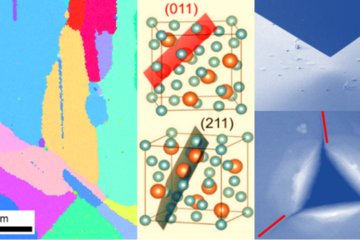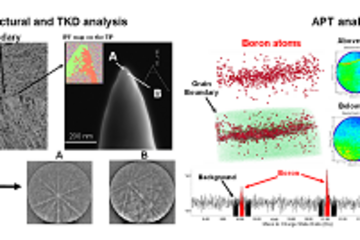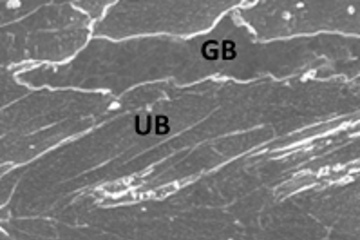All genres
1.
Journal Article
Accelerating ab initio melting property calculations with machine learning: application to the high entropy alloy TaVCrW. npj Computational Materials 10 (1), 274 (2024)
2.
Journal Article
Melting properties of the refractory metals V and W and the binary VW alloy fully from first principles. Physical Review B 109, 094110 (2024)
3.
Journal Article
A fully automated approach to calculate the melting temperature of elemental crystals. Computational Materials Science 187 (11), 110065 (2021)
4.
Journal Article
Performance of the standard exchange-correlation functionals in predicting melting properties fully from first principles: Application to Al and magnetic Ni. Physical Review B 101 (14), 144108 (2020)
5.
Journal Article
An insight into using DFT data for Calphad modeling of solid phases in the third generation of Calphad databases, a case study for Al. Calphad 65, pp. 79 - 85 (2019)
6.
Journal Article
Efficient approach to compute melting properties fully from ab initio with application to Cu. Physical Review B 96 (22), 224202 (2017)
7.
Journal Article
Functional adaptation of crustacean exoskeletal elements through structural and compositional diversity: a combined experimental and theoretical study. Bioinspiration & Biomimetics 11 (5), 055006 (2016)
8.
Journal Article
Ductility improvement of Mg alloys by solid solution: Ab initio modeling, synthesis and mechanical properties. Acta Materialia 70, pp. 92 - 104 (2014)
9.
Journal Article
Ab initio based study of finite-temperature structural, elastic and thermodynamic properties of FeTi. Intermetallics 45, pp. 11 - 17 (2014)
10.
Journal Article
Ab initio and atomistic study of generalized stacking fault energies in Mg and Mg–Y alloys. New Journal of Physics 15 (4), pp. 043020-1 - 043020-19 (2013)
11.
Journal Article
Ab initio study of single-crystalline and polycrystalline elastic properties of Mg-substituted calcite crystals. Journal of the Mechanical Behavior of Biomedical Materials 20, pp. 296 - 304 (2013)
12.
Journal Article
First-principles study of the thermodynamic and elastic properties of eutectic Fe–Ti alloy. Acta Materialia 60 (4), pp. 1594 - 1602 (2012)
13.
Journal Article
Methodological challenges in combining quantum-mechanical and continuum approaches for materials science applications. European Physics Journal Plus 126, pp. 101-1 - 101-22 (2011)
14.
Conference Paper
Quantum-mechanical study of single-crystalline and polycrystalline elastic properties of Mg-substituted calcite crystals. In: Key Engineering Materials, Vol. 592-593, pp. 335 - 341. 7th International Conference on Materials Structure and Micromechanics of Fracture (MSMF 7), Brno, Czech Republic, July 01, 2013 - July 03, 2013. (2014)
15.
Conference Paper
Complementary TEM and ab ignition study on the ductilizing effect of Y in solid solution Mg–Y alloys. In: Proceedings of the 9th Intern. Conference on Magnesium alloys and their applications, pp. 467 - 472. 9th Intern. Conference on Magnesium alloys and their applications, Vancouver, Canada, July 08, 2012 - July 12, 2012. (2012)
16.
Talk
Method developments on melting property calculations and further applications. 4th German-Austrian Workshop, Kirchdorf, Austria (2024)
17.
Talk
Towards high throughput melting property calculations with ab initio accuracy aided by machine learning potential. The third generation (3G) Calphad at KTH, Stockholm, Sweden (2023)
18.
Talk
Towards high throughput melting property calculations with ab initio accuracy aided by machine learning potential. CALPHAD L Conference, Cambridge, MA, USA (2023)
19.
Talk
Melting properties from ab initio using efficient TOR-TILD approach: Applications to refractory metals V, W and V–W alloy. CALPHAD XLVIII Conference, Stockholm, Sweden (2023)
20.
Talk
Towards high throughput melting property calculations with ab initio accuracy aided by machine learning potential and pyiron workflow. CM retreat, Ebernburg, Germany (2022)











